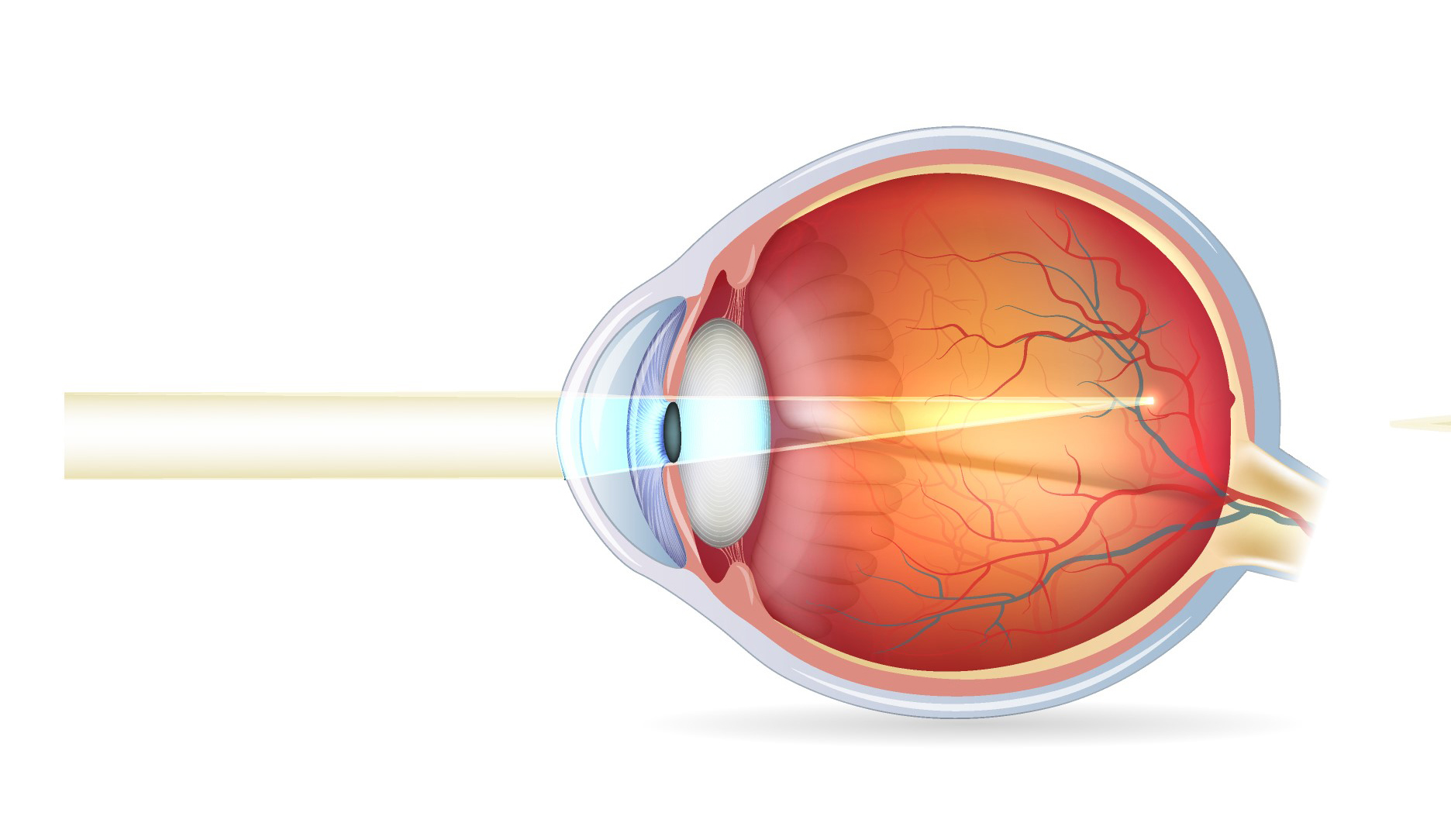[et_pb_section bb_built=”1″][et_pb_row][et_pb_column type=”4_4″][et_pb_text _builder_version=”3.13.1″]
Myopia is not considered as a disease, but as an alteration of vision.
It is a refractory alteration of the eye due to which it is unable to correctly focus on distant objects, causing the subject to have a blurred and ill-defined vision of the forms thereof.
Myopia is transmitted from myopic parents to their children, although it can also affect people with no family history.
In addition to glasses and contact lenses, there are other ways to correct this visual defect.
In the process of normal vision, light rays penetrating the eye undergo a refractive process through the cornea and lens. In this process, the rays are focused exactly on the retina, which causes clear vision and perfect perception of the object.
However, in the myopic eye, the refraction process is altered, which causes the light to focus just in front of the retina. The further away from the retina is the process of focusing on the retina, the greater the difficulty of image perception (more diopters). This is mainly due to two possible causes:
- The cornea is too curved.
- The eyeball is too big.
The typical symptoms of myopia are:
- Difficulty distinguishing objects by having a blurred vision of them; By squinting (“squaring” the eyes) the details are seen more clearly.
- Severe ocular fatigue with redness.
- Headaches.
Always take care of your health with a unique and efficient service. Visit Pharmamedic.
[/et_pb_text][/et_pb_column][/et_pb_row][/et_pb_section]






